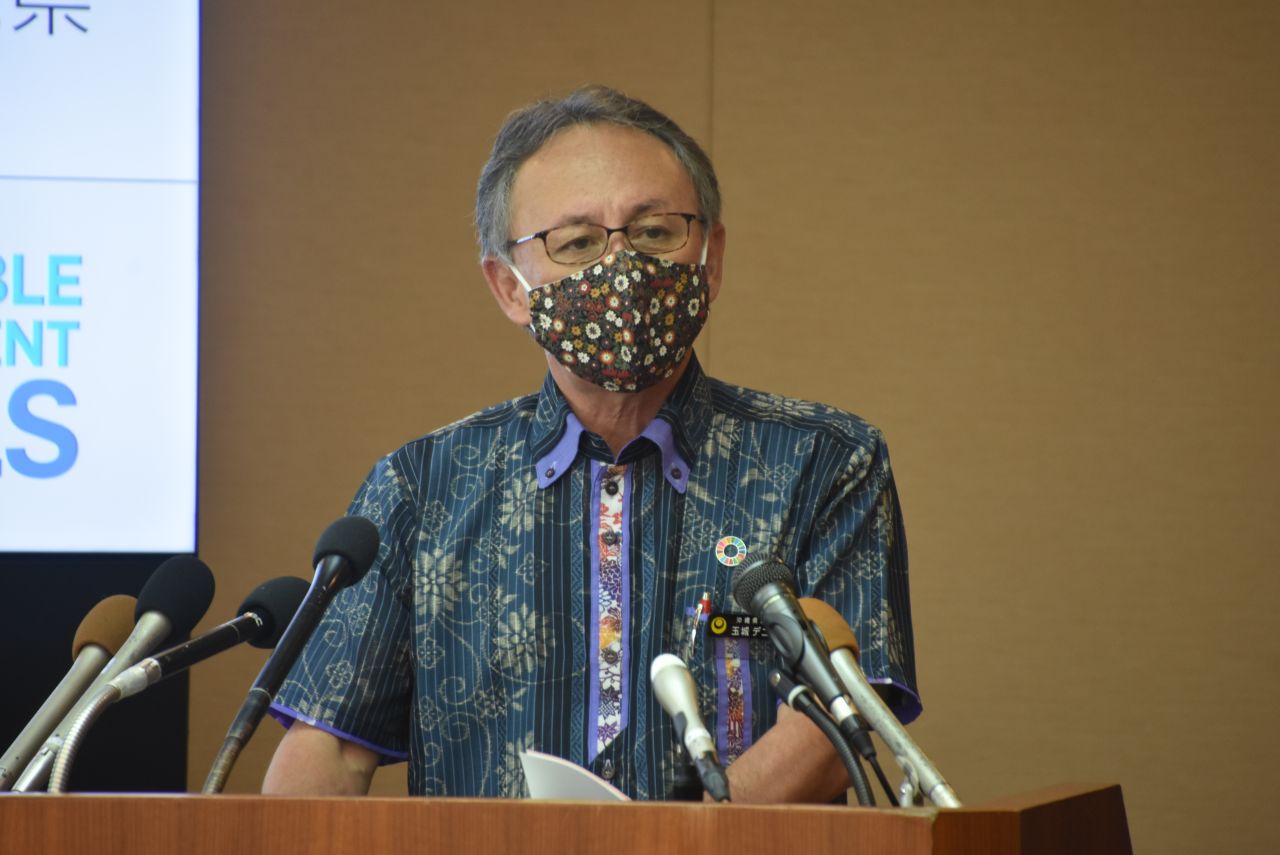Gov. Tamaki shares his mother’s words and lesson learned from WWII: ‘Life is precious’

Gov. Denny Tamaki taking questions from reporters at the Prefectural Government Building during a meeting on the morning of June 26.
June 26, 2020 Ryukyu Shimpo
During a regular meeting on June 26, a reporter asked Governor Denny Tamaki what lessons can be learned from the Battle of Okinawa, referencing the governor’s remarks during the Okinawa Memorial Day ceremony which was held on June 23. The Okinawa governor responded, “In one word, ‘nuchi du takara’ (an Okinawan expression meaning life is precious.)” During the meeting, Governor Tamaki also answered questions about his Ie-Island-native mother’s experiences during WWII and her struggles after the war.
Governor Tamaki elaborated on his response and said, “Many Okinawan lives were lost and [we] need to take to heart the fact that 75 years later, [people] are still grieving. How can we set up an environment that prevents us from paying the human costs of war again? I intend to earnestly explore this question and put it in action.”
Over 1,500 local civilians and over 2,000 Japanese soldiers lost their lives in the battle at Ie Island (April 16-21, 1945) during the Battle of Okinawa. Governor Tamaki’s birth mother was just ten years old when she was caught in the war. She was saved by American soldiers and subsequently placed in an internment camp at Kerama Island. Governor Tamaki said of his mother, “Perhaps in my mother’s recollection the war was not so fierce, or perhaps she didn’t want to talk about what she remembered. Either way, she did not divulge any details of her memory of the war.”
He added, “I was told that life was much harder once the war ended. There were various after-effects, like an injury. I remember hearing my mother’s stories and even as a kid thinking to myself that healing these wounds is not easy.
Governor Tamaki was born to an Okinawan mother from Ie-Island and a U.S. Marine father. The late Katsu Chibana was his adoptive mother.
(English translation by T&CT and Monica Shingaki)
Previous Article:OPG to form committee of civil engineers and other experts to look into opening 32nd Army underground trenches to the public
Next Article:Journal details Okinawan residents being “ordered to leave cave shelters” by the Japanese army during the United States army’s assault in the Battle of Okinawa
[Similar Articles]
- Woman opposes the bases despite having two former U.S. soldiers as sons-in-laws
- “Odori” – novel depicting the spirit of Okinawa
- Twice-adopted U.S. singer-songwriter returns to Okinawa after 27 years
- Toshiko Kinjo looking for her sister separated in Saipan during war
- 93-year-old woman calls for no more war
 Webcam(Kokusai Street)
Webcam(Kokusai Street)


